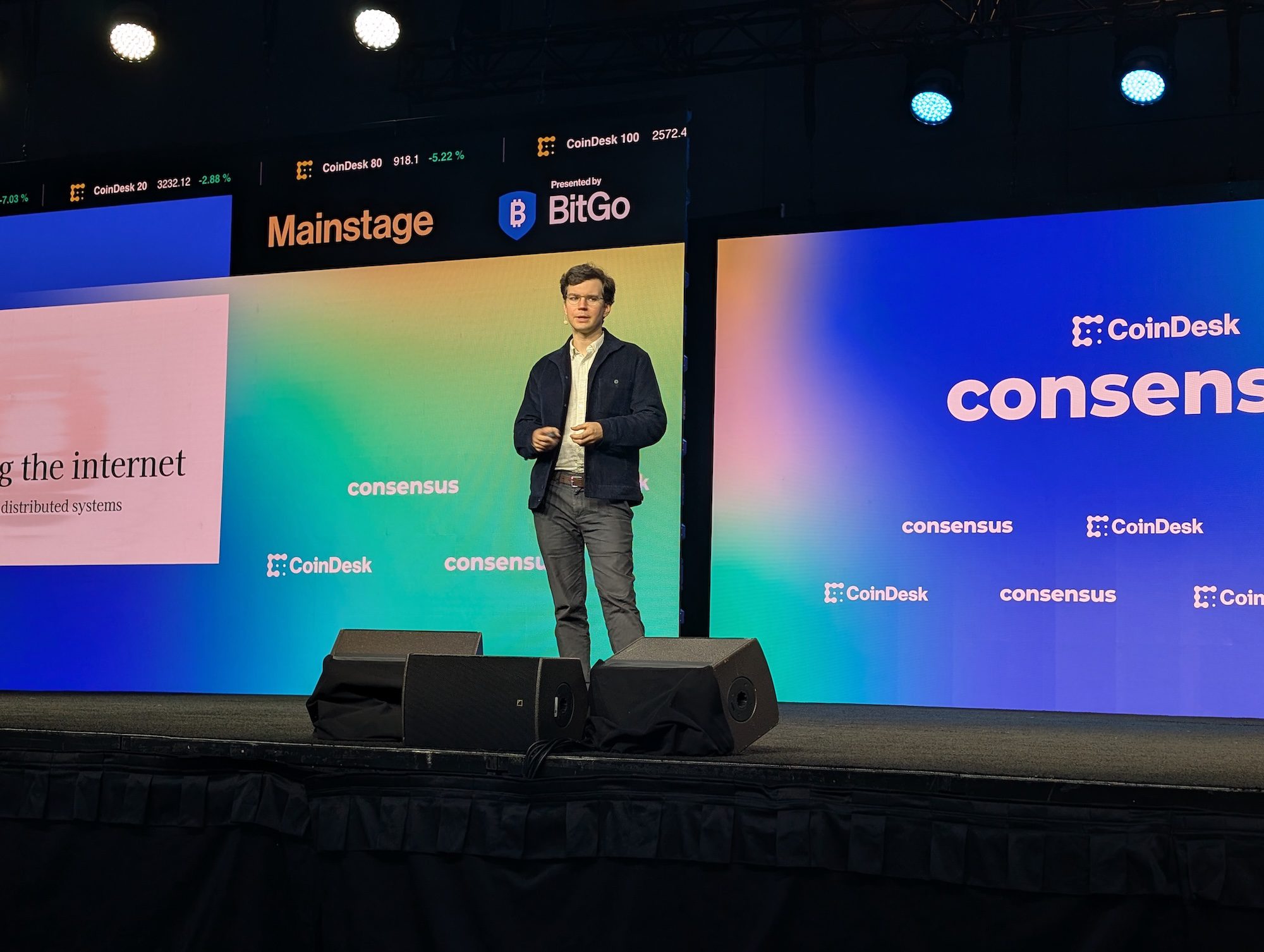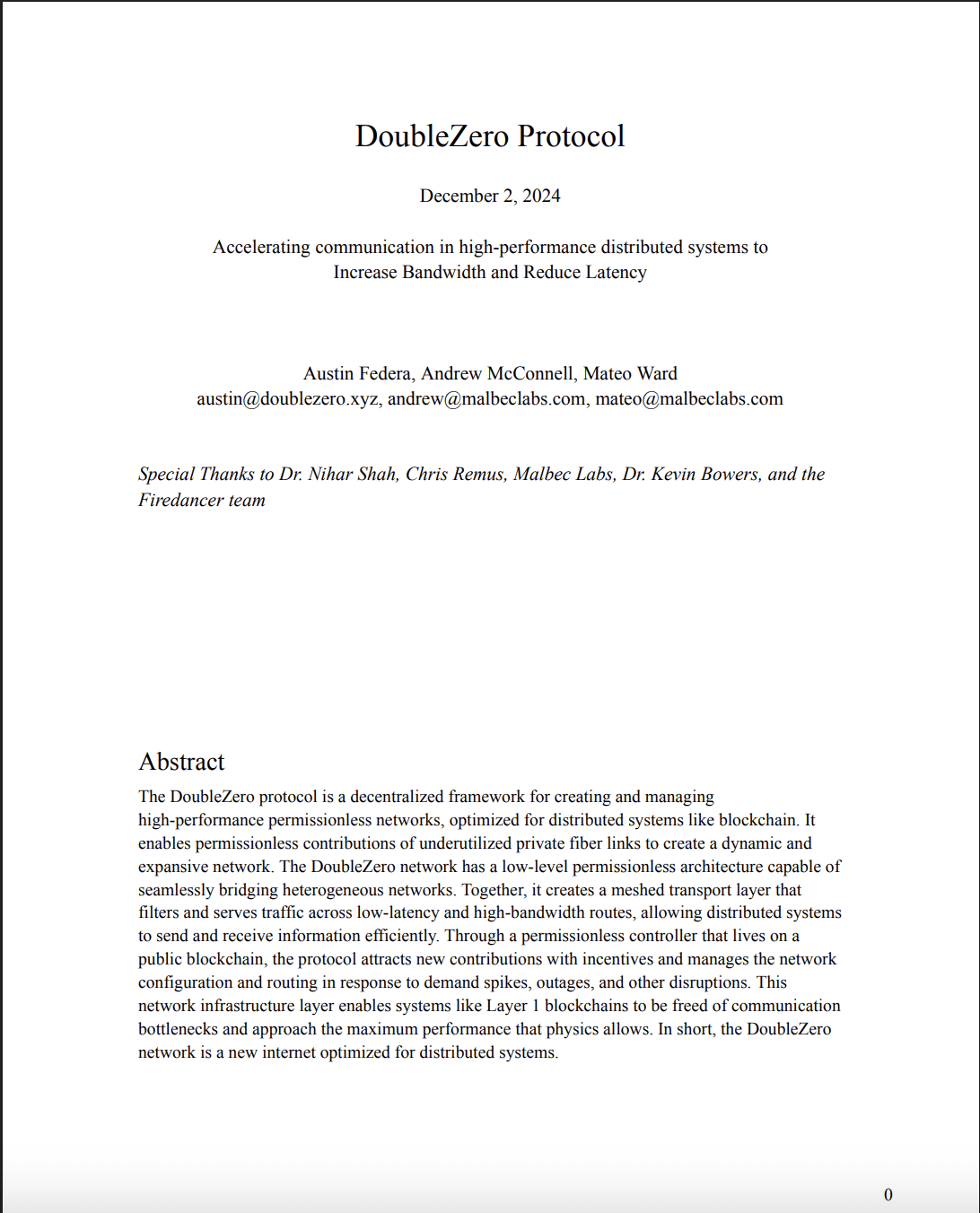According to Austin Federa, co-founder and CEO of DoubleZero, a project focused on developing high-speed fiber optic communication rails for blockchains, the public internet infrastructure is currently the critical bottleneck for high-throughput blockchain networks. This assertion highlights a growing need for specialized infrastructure to support the increasing demands of blockchain technology.
“The downside of the public internet is it was never built for high-performance systems. It was always built for this sort of relationship of one big server talking to one little server,” Federa explained in an interview at Consensus 2025. He elaborated on the challenges faced by validators:
“We have validators all around the world. Rotating leader schedules all the time. And then they switch from having to be massive consumers of data to extremely massive broadcasters of data. So that means that they need huge amounts of resources both on ingress and egress.”
Federa emphasizes that the limitations of public internet infrastructure are now the primary impediment to blockchain performance, surpassing compute power and software development as the key constraint.

The Promise of DoubleZero: Faster Blockchains and New Use Cases
DoubleZero aims to address these limitations by creating a dedicated, high-performance communication network for blockchains. This network promises to:
- Increase Blockchain Speed: By minimizing latency and maximizing bandwidth, DoubleZero can significantly accelerate transaction processing and data transmission within blockchain networks.
- Decrease DeFi Spreads: Faster communication leads to more efficient price discovery and reduced arbitrage opportunities in decentralized finance (DeFi) trades, resulting in tighter spreads for users.
- Lower Transaction Fees: Improved network efficiency can translate to lower transaction fees, making blockchain applications more accessible and cost-effective.
- Unlock New Use Cases: The enhanced performance enabled by DoubleZero opens up possibilities for new blockchain applications that were previously impractical due to communication infrastructure limitations. This includes applications requiring near-instantaneous data transfer and high throughput.
DoubleZero’s Origins and Vision
Founded by Austin Federa in December 2024 after his departure from the Solana Foundation, DoubleZero Protocol is designed to tackle two critical aspects of network performance: latency (the time it takes for data to travel) and bandwidth (the maximum data traffic a network can handle). The project’s vision is to provide a robust and efficient communication layer specifically tailored for the needs of high-performance blockchain networks.
In April 2025, DoubleZero conducted a validator token sale, offering token purchase agreements to accredited investors and active validators on prominent high-throughput blockchains like Solana, Celestia, Sui, Aptos, and Avalanche. This strategic move aims to onboard experienced node operators and secure the infrastructure necessary for the network’s operation.

Looking Ahead: Mainnet Launch and the Future of Blockchain Infrastructure
Following a successful $28 million capital raise, DoubleZero is targeting a public mainnet launch in the second half of 2025. This launch will mark a significant milestone in the development of dedicated blockchain communication infrastructure.
Federa argues that the increasing throughput demands of blockchain networks and the industry’s overall evolution necessitate the development of specialized, high-performance communication infrastructure. This infrastructure is crucial to support the needs of increasingly sophisticated blockchain projects and to unlock the full potential of the technology.
The Broader Context: Why Dedicated Blockchain Infrastructure Matters
The reliance on the public internet presents several challenges for blockchain networks:
- Congestion: Public networks are often congested, leading to delays and increased latency, particularly during peak usage times.
- Security Risks: Public internet infrastructure is susceptible to various security threats, such as DDoS attacks, which can disrupt blockchain network operations.
- Lack of Optimization: Public networks are not specifically optimized for the unique requirements of blockchain communication, resulting in inefficiencies and performance bottlenecks.
Dedicated blockchain infrastructure, like DoubleZero, addresses these challenges by providing a purpose-built network that is optimized for performance, security, and reliability. This infrastructure is essential for enabling the next generation of blockchain applications and for supporting the continued growth and adoption of the technology.
The development of specialized infrastructure solutions like DoubleZero represents a critical step forward in addressing the scalability and performance challenges facing blockchain technology. By providing a dedicated, high-performance communication layer, these solutions have the potential to unlock new possibilities and drive innovation across the blockchain ecosystem.